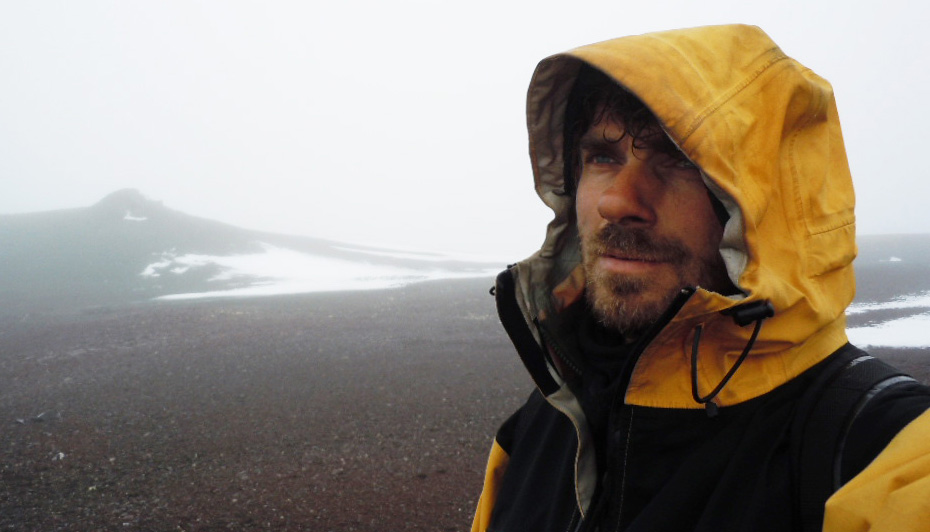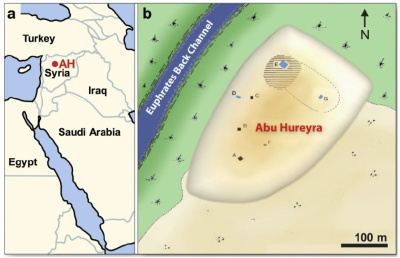Marcela Uhlíková • foto: archiv GK, Scientific Reports • 29 April 2020
Günther Kletetschka - On the trail of a 13,000-year-old comet collision
Geophysicist Günther (Gin) Kletetschka is a member of an international team of scientists on their way to confirming a hypothesis that says life in the Ice Age was influenced by a collision with a cosmic object. Another piece in the puzzle leading to the discovery of the catastrophe was published in March of this year in Scientific Reports.

In Antarctica
If he had his way, Kletetschka would rather be aboard a ship sailing the seas off of Iceland. Instead, he’s home in his attic office not far from Říčany outside of Prague, where he goes over available data – trying to decipher what all of the numbers mean.
Testimony in melted glass
Evidence that “something strange” more than 12,000 years ago caused a rapid cooling of the climate on Earth was presented by scientists in North America and Mexico. Interesting findings in the form of lake sediments were even discovered in the Czech Republic’s Šumava forest. Scientists also managed years ago to gain data from an area in Syria▼. “Only now have we finally realised what the data from Abu Hureyra in Syria means,” the scientist from Charles University’s Faculty of Science admits. As the geophysicist describes further, archaeological research in the area confirmed that due to enormous energy released by the impact, the local temperature hit a fiery 2,200 degrees Celsius: Abu Hureyra literally melted. The proposed cosmic impact left a mark on a local village and surroundings: vegetation, dwellings and pots inside them were melted. Glass with a very low proportion of water was found in a layer around 12,800 years old. This is a characteristic of areas that have been exposed to enormous thermal energy.
“With this discovery, we were able to shatter our hypothesis that this was only a local phenomenon. Until recently, glass with similar characteristics only came from North America. Gradually, however, these were joined by Chile, Africa and now Asia. This really looks like it was a global event,” Kletetschka, who has long studied glass and its magnetic properties, suggests. This is why his role on the scientific team is to compare the collected glass from individual locations and focus primarily on its magnetism.
Magnetism is the key
“The magnetic properties of glass can tell a lot about its origin,” the scientist says. For example, glass which is produced by melting rock under a strong electric discharge (such as from lightning), has a magnetism so strong that it can’t be magnetised further; it’s practically magnetically saturated. “The research into the Syrian glass, which I carried out at the magnetic laboratory of the Institute of Geology of the Academy of Sciences in Průhonice, showed that the glass is magnetically saturated at around one percent. In effect, we can rule out lightning as a cause,” he adds.
What has Gin wondering– and he’s far from alone – is why no crater that should have been caused by the supposed comet’s impact has never been found. There should be one – somewhere - confirming the hypothesis of a collision of an extraterrestrial object. “We have evidence of destruction, of the presence of elements which are not normally found freely on Earth. But we’re missing is evidence of the cause.”
What can we learn from the ocean floor?
Kletetschka hopes to continue his research on board one of three ships from the US, Japan and China, which are “drilling” on the ocean floor as part of the International Ocean Drilling Program◄. He’d like to join, despite being from the landlocked Czech Republic. “Every country with direct access to the ocean has scientists there. We don’t, so we aren’t represented: but the justification that we don’t have an ocean has no basis in logic,” he says, not hiding his disappointment. “Because sedimentation takes place very slowly in oceans, I’d like to get a sample of a core showing the period I’m researching. We’re talking a sample that is around 13,000 years old.” Of all the places he’d most like to be at the moment is off the coast of Iceland, where the fault line between the Eurasian and North American plates. “The fault-line between the European and American plates is very promising. From the point of view of my research, there are a number of interesting phenomena caused by the movement of the oceanic crust, which has caused large deposits of sediment in places south of the island. I believe that evidence covering the main part of the whole event could be found there.”
A step closer via Syria
Gin Kletetschka wants proof that impact from a comet was behind the melting of glass 12,800 years ago. Or if not a comet, then something else… but an answer nonetheless. “A series of published scientific articles will always move us closer to the truth a bit,” the geophysicist says. The last place the geological team explored is the important archaeological site of Abu Hureyra in northern Syria along the Euphrates River. “It’s the first time that a break or major adaptation in the living strategy of local inhabitants can be strongly observed: at the end of the last ice age they transitioned from hunting and gathering to an agricultural way of life. I am in favour of the theory that this radical change was prompted by a major natural disaster,” Günther Kletetschka says. He’s not alone in wanting to know what triggered an abrupt climate cooling some 12,800 years ago and he’s not likely to rest until he is satisfied.
|
Günther Kletetschka, Ph.D. → works at the Institute of Hydrogeology, Engineering Geology and Applied Geophysics at CU’s Faculty of Science → studied geophysics at the Faculty of Mathematics and Physics at CU and geology and geophysics at the University of Minnesota → At the CU Faculty of Science, at the Institute of Geology of the Academy of Sciences of the Czech Republic and the Institute of Geophysics at the University of Alaska, Fairbanks, he has dealt with climate change, carbon nanotechnology, the magnetism of impact craters on Earth, the magnetism of trees, the development of Mars, the continental ice sheet in Antarctica and the survival of organisms in extremely low temperatures → he has also studied traces of the so-called Tunguska event in Siberia in 1908 → In 2020, the team led by Dr. Richard Firestone at the prestigious Lawrence Berkeley National Lab in the USA, of which he is a member, published a hypothesis suggesting the possibility that the cause of the last great cooling on Earth before the onset of the Holocene and at the same time the cause of the extinction of the great Pleistocene mammals and disappearance of the Paleo-Indian Clovis culture 12,800 years ago was a collision between an object from space and the Earth. |
Additional editing by Jan Velinger



